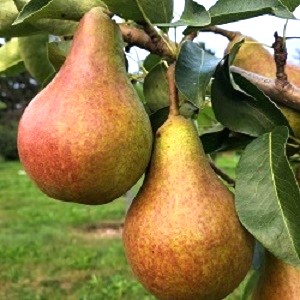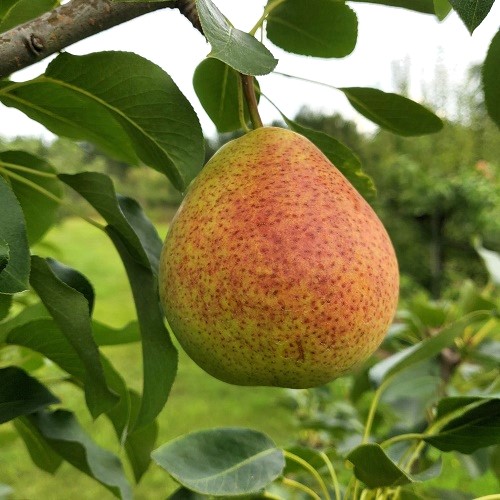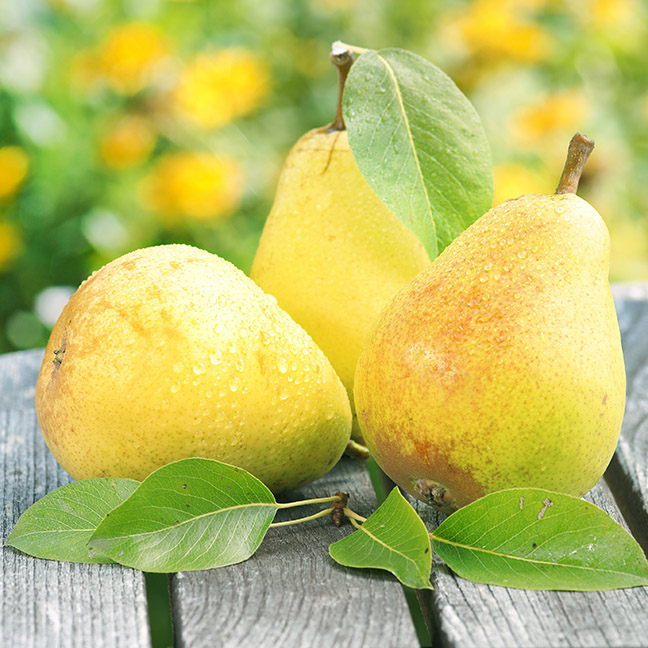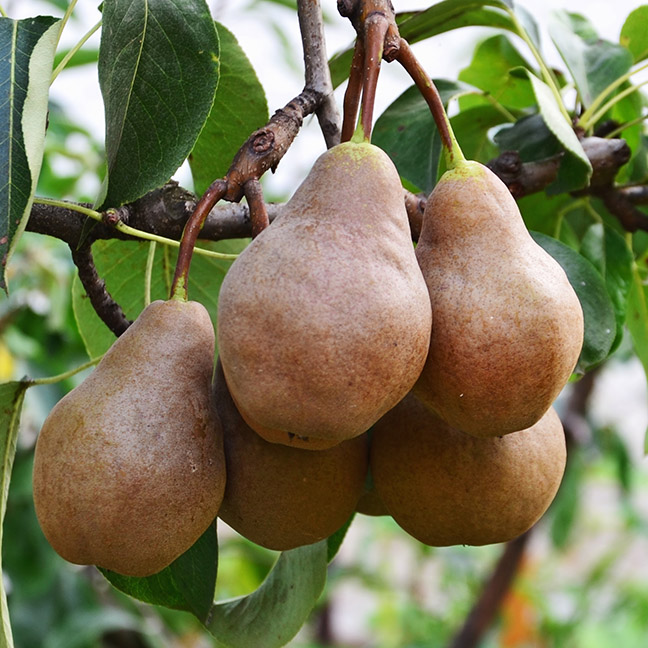European Pear : RESCUE Semi-Dwarf (OHxF87) (Orchard Grade)
$37.95
An 'orchard grade' is a tree that may be somewhat shorter, slightly crooked, or a bit scratched, or for some other reason is not a perfect front lawn specimen. These trees will work just as well in an orchard as a first or number one would, since they still produce the very same fruit.
A Rescue tree bedecked with ripening fruit is a sight to behold! As Raintree Nursery puts it, "This pear is a show stopper. Everyone who sees and tastes this huge, beautiful fruit insists on buying a tree!" A bright, red-orange blush covers much of the yellowish skin. Creamy, smooth flesh is meltingly juicy with a luscious, soothing flavour for the pleasurable fresh eating. With it's small core, Rescue is an ideal canning pear too. The reliable, disease resistant tree will benefit from support under heavy laden branches in the last month or so before picking, to prevent them from breaking.
SEMI-FERTILE* | ZONE 4/5 | HARVEST : MID-SEPT
Only logged in customers who have purchased this product may leave a review.
Growing Tips
All European (regular) and Asian pears will pollinate each other providing their bloom times overlap. Generally you can go by the expected harvest time, meaning only the very early and the very late might not be compatible with each other. However, since Asian pears, on average, bloom earlier than Europeans, you might pair an early European with a mid or late Asian.





Reviews
There are no reviews yet.